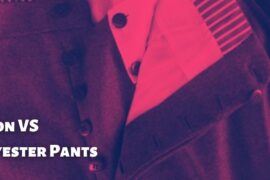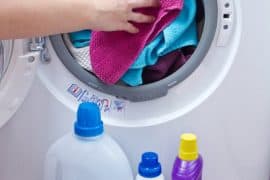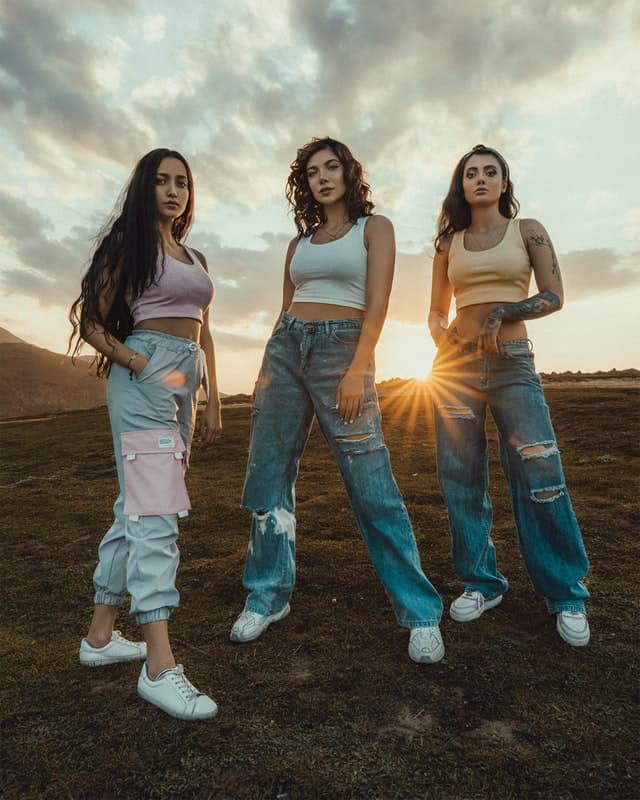The building blocks for garments and fashion apparel in the world are fabrics. The quality and durability of a piece of garment is dependent on its basic raw material i.e. the fabric.
Designers and manufacturers lay special emphasis on the selection of the best quality fabrics for their products and fashion apparel.
Ready-made garments that are produced in bulk quantities in factory set-ups have different types of production processes depending upon the fabric they are made up from.
Keeping in view the importance of fabrics in the textile world, it is essential to understand its manufacturing process as well. This insight allows us to better gauge the quality and composition of the fabric and make a better selection for our garment needs accordingly.
There are a few basic steps involved in fabric production. A brief description of each step is provided below.
Step 1: Yarn Production
Like the fabric is a raw material for clothing, yarn is the raw material for fabric. It is the underlying requirement to start the manufacturing of any kind of fabric.
Yarn is obtained from fibers which may either be synthetic or natural. Based on the type of fabric you want to produce, the fiber is selected and turned into yarn and thread.
The process of yarn production starts from harvesting of the cotton crop or any other synthetic fiber and forwarding it to the spinning units.
In the older times, spinning was done by hands on a spinning wheel. However, with so much technological advancement over the years this process in now fully mechanized and automated.
As the fibers are put across the spinning wheels that are rotating at a high speed, they are woven together to form a thread or spun fibers that are collected on an elongated reel or cylinder called the bobbin.
This is the process by which thread or yarn is made and the bobbins are ready to be shifted to the next machine for fabric production.
Step 2: Joining
Option 1: Weaving Process
This is one of the most widely used methods of fabric manufacturing. In the ancient times weaving was done by hands on hand looms. Even today, hand woven cloth is made in many parts of the world. It is much more valuable and expensive as compared to machine woven fabrics.
- The Weft and the Warp
The process of weaving starts by taking two separate sets of thread or yarn. The first set is called the warp while the second set is called the weft or the filling. The interlacing of these two sets of yarns results in the production of the fabric.
- The Loom
The frame or machine that holds the warp thread in place during the process is called the loom. It spans the warp from front to back in a lengthwise direction. The weft is then run through the warp in a criss cross direction and fill in the spaces to create a smooth tight woven surface.
The yarn that is made from natural materials is mostly opted for weaving process. Silk, wool, cotton and nylon are most widely used threads in this process worldwide.
Option 2: Knitting Process
Apart from woven fabrics, the industry also uses textiles that are knit. With different characteristics, a knitted fabric is considered to be comfortable, flexible and warm.
Over the years a lot of versatility has been added to this fabric through innovation and technique advancement. Knitted fabrics possess unique and diverse properties including stretching capability or elasticity, resistance to wrinkles, smooth and tighter fitting as compared to their woven counterparts.
These fabrics are ideally used for home furnishings and upholstery requirements.
Knitting process also starts with yarn as the basic raw material. Instead of the interlacing process, the yarn goes through a twisting or bendy path and results in formation of symmetrical stitches or loops.
- The Wale
The lengthwise running loops that interlock together to form rows are called wales. It is similar to a warp in the weaving process.
- The Course
A course is like the weft or filling portion of the woven fabric. It comprises of the yarn loops that are running across the direction.
Types of Knitting
There are two forms of knitting processes. One is called the weft knitting while the other is called the warp knitting. The former uses one long strand of yarn to run across the fabric while the latter involves multiple yarns or threads forming wales that run in a vertical direction of the fabric.
Crochet is also a variation of knitting and is mostly done by hand.
Option 3: Non-woven Processes
Apart from the above mentioned, the fabrics can also be produced by interlocking and bonding of the yarn fibers through other processes like chemical means, solvents, thermal actions and mechanical methods.
- Staple Non-Woven
The basic process involves spinning of the fibers and cutting into small pieces. These are then packed into bales which can be spread uniformly over a conveyor belt by the carding process.
The fibers are then bound together through resin or a thermal action. These are the staple non-wovens.
The other category is the spun laid non-woven fabric.
- Spun Laid Non-woven
This is a slightly different process which involves fibers that are spun and spread to a web in a direct manner. The dispersal of fibers is done through air streams or deflectors. The spun laid fabrics are also bonded using resin or thermal methods.
The Finishing Process
Once the fabric has been woven, knitted or bonded, it is available for the final step of manufacturing. This is the finishing process.
- Greige
The fabric that has been freshly prepared and taken off from the loom is called greige. It is often a bad looking continuous spread of fabric that is discolored and contains fibrous particles and impurities.
Therefore a cleaning process is necessary to make the fabric fit for use for various textile and apparel purposes.
- Bleaching
The first thing that this greige goes through is bleaching to cut down any discoloration and bring uniformity in it.
- Removal of Debris and Impurities
The fabric is then given treatment with various cleaners and chemicals for the removal of any type of debris including waxes, oils and seed particles.
The Fabric is Ready!
After the final cleaning is done, the fabric is ready to be used for various textile and apparel production purposes. What comes after fabrics? Garments! Check out this article on how jeans are made





